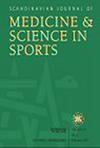健康研究中的加速度计报告:当前指南的范围审查。
IF 3.8
2区 医学
Q1 SPORT SCIENCES
引用次数: 0
摘要
在健康研究中使用加速度计是普遍存在的,但是将原始加速度数据转化为运动行为估计的方法报告仍然不一致。本综述旨在确定和总结健康研究中基于加速度计的身体活动、久坐行为和睡眠评估的现有报告指南。我们系统地检索了截至2024年5月的7个书目数据库,以获取包含健康研究中加速度计结果报告指南的文献。我们使用AGREE II工具和EQUATOR网络的最佳实践建议评估了报告指南制定的方法严谨性。专题综合将报告指南分为四个主题:(1)数据收集,(2)数据管理和初始处理,(3)从加速度数据中导出运动行为,以及(4)汇总指标。检索到7739条记录,其中包括47份出版物。大多数应用证据综合方法(76%),而其他人则使用共识研讨会或实证研究来生成报告建议。只有17%的人描述了涉众的参与,对涉众角色的描述有限。我们确定了380个报告指南项目,这些项目被综合成124个独特的项目。报告指南对于数据收集、数据管理和初始处理以及变量推导是一致的,但是对于报告哪个特定的度量标准就不那么一致了。现有的卫生研究加速计报告指南范围广泛,但方法的严密性和利益攸关方的参与程度各不相同。需要一个统一和系统开发的框架,以提高未来基于加速度计的研究的可重复性和可比性,包括利益攸关方的参与、共识驱动的方法和试点,以最大限度地吸收。普洛斯彼罗注册号:CRD42021272228。本文章由计算机程序翻译,如有差异,请以英文原文为准。
Reporting of Accelerometry in Health Research: A Scoping Review of Current Guidance.
The use of accelerometers in health research is ubiquitous, but reporting of methods for translating raw acceleration data into movement behavior estimates remains inconsistent. This scoping review aims to identify and summarize existing reporting guidance for accelerometer-based assessment of physical activity, sedentary behavior, and sleep in health research. We systematically searched seven bibliographic databases up to May 2024 for literature containing guidance on reporting of accelerometry results in health research. We assessed the methodological rigor of reporting guidance development using the AGREE II tool and EQUATOR Network's best-practice recommendations. A thematic synthesis categorized reporting guidance across four themes: (1) data collection, (2) data management and initial processing, (3) deriving movement behaviors from acceleration data, and (4) summary metrics. Searches retrieved 7739 records, from which 47 publications were included. Most applied evidence synthesis methods (76%), whilst others used consensus workshops or empirical research to generate reporting recommendations. Only 17% described stakeholder involvement, with limited descriptions of their role. We identified 380 items of reporting guidance, which were synthesized into 124 unique items. Reporting guidance was consistent for data collection, data management and initial processing, and variable derivation, but less so regarding which specific metrics to report. Existing reporting guidance for accelerometry in health research is extensive and wide in scope, but varies in methodological rigor and stakeholder involvement. A consolidated and systematically developed framework is needed to enhance the reproducibility and comparability of future accelerometer-based research, incorporating stakeholder engagement, consensus-driven methodology, and piloting to maximize uptake. PROSPERO Registration: CRD42021272228.
求助全文
通过发布文献求助,成功后即可免费获取论文全文。
去求助
来源期刊
CiteScore
7.90
自引率
4.90%
发文量
162
审稿时长
3 months
期刊介绍:
The Scandinavian Journal of Medicine & Science in Sports is a multidisciplinary journal published 12 times per year under the auspices of the Scandinavian Foundation of Medicine and Science in Sports.
It aims to publish high quality and impactful articles in the fields of orthopaedics, rehabilitation and sports medicine, exercise physiology and biochemistry, biomechanics and motor control, health and disease relating to sport, exercise and physical activity, as well as on the social and behavioural aspects of sport and exercise.

 求助内容:
求助内容: 应助结果提醒方式:
应助结果提醒方式:


